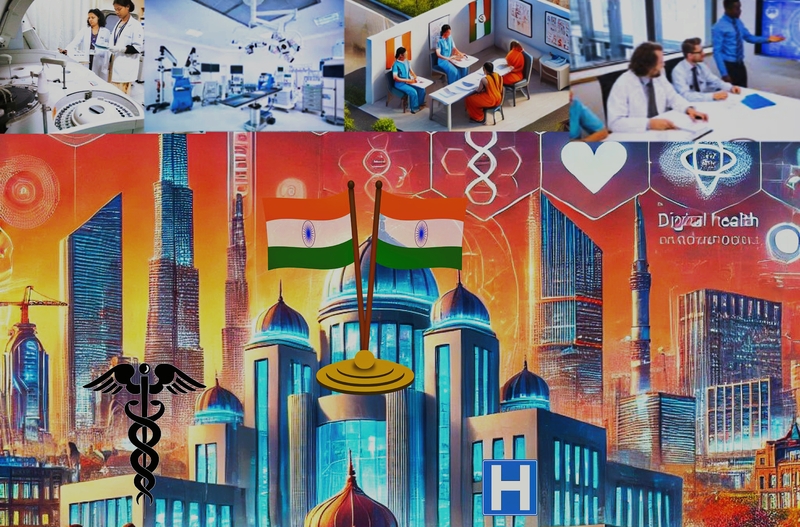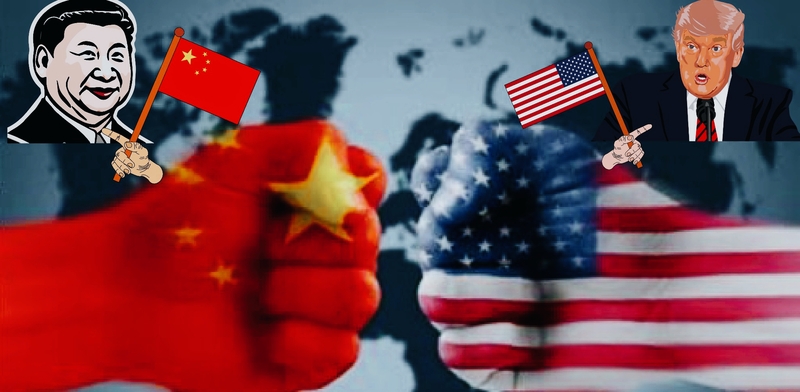 The state of India's Health Transformation. Photo Credits: Dheerajbojwani/Observer/exceed/AI
The state of India's Health Transformation. Photo Credits: Dheerajbojwani/Observer/exceed/AI
India’s Healthcare & Pharma Revolution: Transforming Global Health And Innovation
Asia
Business
India’s healthcare and pharmaceutical industry stands at a pivotal juncture. With a rapidly expanding population, increasing life expectancy, and a growing middle class, the demand for quality healthcare and affordable medicines is soaring. India is not only transforming its domestic healthcare landscape but also reinforcing its position as a global pharmaceutical powerhouse.
From generic drugs to pioneering telemedicine solutions, India's healthcare ecosystem is evolving at an unprecedented pace—though challenges such as regulatory complexities, infrastructure gaps, and high out-of-pocket expenses continue to influence the sector’s trajectory.
India: The "Pharmacy of the World"
India is widely recognized as the "Pharmacy of the World," and for good reason:
From generic drugs to pioneering telemedicine solutions, India's healthcare ecosystem is evolving at an unprecedented pace—though challenges such as regulatory complexities, infrastructure gaps, and high out-of-pocket expenses continue to influence the sector’s trajectory.
India: The "Pharmacy of the World"
India is widely recognized as the "Pharmacy of the World," and for good reason:
- 40% of generic drug supply to the U.S.
- 20% of global pharmaceutical exports.
- 60% of the world’s vaccine production.
With strong R&D capabilities, cost-effective manufacturing, and a highly skilled workforce, India plays a critical role in making medicines affordable worldwide. Major pharmaceutical companies such as Sun Pharma, Cipla, and Dr. Reddy’s Laboratories have significantly expanded their global footprints. Simultaneously, startups are advancing innovations in biotechnology, biosimilars, and personalized medicine, signaling a bright future for Indian pharma.
The Digital Healthcare Revolution
India’s digital healthcare market is experiencing explosive growth, fueled by over 850 million internet users. Key trends include:
- Telemedicine: Platforms like Practo, 1mg, and Tata Health offer online consultations, diagnostic bookings, and medicine deliveries.
- AI-Driven Diagnostics and Wearables: Technology is making healthcare more accessible and personalized.
- Government Initiatives: The National Digital Health Mission (NDHM) is building a seamless digital health ecosystem centered on electronic health records.
The COVID-19 pandemic served as a catalyst for digital health adoption, and telemedicine is projected to grow at a 31% CAGR, making it one of the fastest-growing healthcare segments.
Medical Tourism: India’s Global Healthcare Magnet
India has emerged as a leading destination for medical tourism, attracting over 2 million patients annually from the U.S., U.K., and Middle East. Its appeal stems from:
- Affordable Treatments: Major surgeries cost 10–15 times less than in developed countries.
- World-Class Facilities: Institutions like Apollo Hospitals, Fortis, and Medanta offer internationally accredited services.
- Alternative Medicine: India's traditional therapies, such as Ayurveda, add to its global appeal.
The medical tourism market is projected to reach $13 billion by 2026, positioning India as a premier global healthcare hub.
Opportunities for Investment and Growth
Several factors make India’s healthcare and pharma sector ripe for investment:
- Government Support: Initiatives like the Production-Linked Incentive (PLI) Scheme for Active Pharmaceutical Ingredients (APIs) are promoting self-reliance.
- Export Potential: Companies focusing on markets in the U.S., Europe, and Africa benefit from India's strong manufacturing ecosystem.
- Emerging Sectors: Biopharmaceuticals, gene therapy, and personalized medicine are poised for significant growth.
- HealthTech Innovation: AI-driven diagnostics, robotic surgeries, and predictive analytics are redefining healthcare delivery.
Private Healthcare and Insurance Boom: With rising incomes, there’s growing demand for private healthcare services, and India's health insurance market is projected to grow at a 15% CAGR.
Persistent Challenges
Despite its momentum, the industry faces notable challenges:
- Regulatory Hurdles: Complex drug approval processes and compliance with stringent international standards like FDA and WHO regulations can delay product launches.
- Urban-Rural Healthcare Divide: While 65% of the population lives in rural areas, advanced medical infrastructure is largely urban-centric.
- High Out-of-Pocket Expenses: Over 60% of healthcare costs are borne by patients directly, highlighting the need for broader insurance coverage like Ayushman Bharat.
- Supply Chain Vulnerability: India imports 60–70% of its APIs from China, underscoring the importance of building a resilient domestic supply chain.
Shaping the Future of Global Healthcare
Despite these challenges, India's healthcare and pharmaceutical sectors offer immense promise. Key growth drivers include:
- Strong government backing through PLI schemes and digital health initiatives.
- Rising global investments in Indian healthcare startups and biotech ventures.
- Growing awareness of preventive healthcare and the adoption of digital solutions.
India is not just shaping its own healthcare future—it is playing a pivotal role in transforming global healthcare access and affordability. Whether through affordable generics, groundbreaking biotechnologies, or innovative digital health platforms, India continues to redefine the future of healthcare worldwide.
For businesses and investors, the time to engage is now—through innovation, collaboration, and strategic investment, they can help build a healthier future for millions across the globe.
Senior Editor & Author: Kenneth Njoroge
Financial Expert/Bsc. Commerce/CPA
